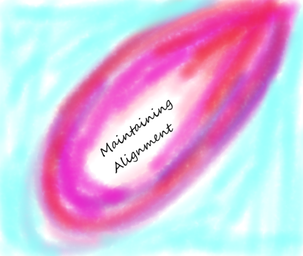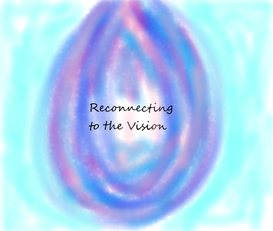|
The role of the problem development and reflection is a crucial step before moving into action. This is because the action itself is less driven by a particular product as it is by the most efficient and effective approach to solving the problem. What is interesting about moving into the action-space is that we often see aspects of the problem that were not initially made clear.
Moving into the project space gives us a new and more grounded understanding of the problem, and solution. The first step into the Action Space can be done with the use of a prototype. This is then used to inform the next step. Successive approximation is the name of the game. There is a target with is our vision of the outcome we see, and there are the progressive steps towards that target. I recall attending a seminar with the Mind, Brain and Education group in Southern California. The speaker talked about fidelity, not as following a script, but as moving in this stepwise fashion towards the ultimate goal. Moving into the Solution Space Using Six Steps
|
SUMMARY OF THE STEPS
Visioning & Intention Setting The Power of Goals - How are Goals and Intention Connected…. Goal setting is a life skill. Project-based learning is not only action oriented but can be defined as a series of actionable goals. The overall vision of what is to be achieved, the ideal outcome, will be arrived at usually through a stepwise process. What helps a person to achieve goals using a project-based approach is the same neural system that helps them achieve their goals in life. We are becoming a goal and objective oriented society. The highest expression of this is when the student develops both the goal and the framework within which he or she will accomplish the goal. This is not an easy task, even most adults have difficulty with this. Many adults who flourish in a structured environment, fall apart when left to their own devices. They may or may not be able to get things done unless they have someone, a boss, giving them instruction on when and how to accomplish these. This approach teaches students how to become their own boss. Today’s workplace is a much different environment that in the past. The most evolved companies like Google or _____________, are creating a new level of freedom for employees to manage their own project, and their own time. If we have not given our students experience with such self-direction they will have difficulty knowing what to do. Giving students some experience with and tools for goal setting is a great foundation for our new and unknown work world. Whatever the future may bring, knowing how to formulate a plan and manage your time will be invaluable. Small Steps The Prototype Prototyping is the essence of moving into action effectively. The truth is that what is in the idea space is an ideal. Once moving towards materializing that idea, we move from infinite, endless, and boundless possibility to the constraints of our real, 3D existence. In their book Presence” An Exploration of Profound Change” Peter Senge, Otto Scharmer and others discuss the core purpose of prototyping. In its essence, prototyping accesses and aligns the wisdom of our head, hear tnad hands by focing us to act before we’ve figured everything out and created a plan. A tenet of prototyping is acting on a concept before that concept is complete or perfect. People concerned about success often want to slow down and plan or take more time to become comfortable with a course of action—but that may be exactly when you need to act.
We discussed earlier the role of prototyping, and because it is part of a process, prototying give us the chance to check our work. Is it fitting with the ideal we started with? Are we still acting with fidelity to our primary purpose? In their book Presence, Senge and colleagues refer to this state of staying connected to the vision. Effective prototyping requires the capacity to stay connected and grounded in your deepest source of inspiration and larger will while simultaneously learning to listed to all of the feedback your actions elicit. If you’re open, the larger environment will continually tell you what you need to learn. The feedback you get from experiments will give helpful clues about how to shape mold, and concretize what is beginning to form—but only if you learn to listen and set aside your negative reactions to “not getting it right” from the outset.” As mentioned, this approach looks for ways that it can encourage the development and expression of a person’s individual and unique talents and gifts. I am fascinated by what inspires people. It is so individual. One person may be completely inspired by space, or trains or comic books for that matter. I believe some of what we bring into the world goes beyond our experiences, but is deeply related to a higher purpose we serve. I know for myself, from my own experience, that when something is relevant to what I would call my gifts, I get a strong emotional response towards it. When we find those things that fit within our own deep personal desires, we experience an emotional response, a type of resonance. Our goal is to help students recognize this emotional response so they can use it to direct their lives. This response is empowering because it activates our deep intrinsic desires and motivation. How do I allow for each person to follow their own intriguing idea? TOOLS TO FIND THE EMOTIONAL RESONANCE IN A PROJECT: At this point students have been involved in all aspects of developing the problem-to-solution. The difficulty may arise when the project does not come simply and easily into fruition. Helping students to reconnect to the purpose of their project in the first place will reignite their intrinsic motivation. PROCESS FOR RECONNECTING TO PURPOSE: REMIND YOURSELF WHAT WAS YOUR ORIGINAL PRIMARY GOAL? WHAT IS IT THAT YOU ARE TRYING TO ACHIEVE WITH THIS PROJECT? LOW LEVEL PURPOSE – HIGH LEVEL PURPOSE- HOW WELL DOES THIS SOLUTION MEET THE PURPOSE? LOW LEVEL PURPOSE – HIGH LEVEL PURPOSE – WHAT ARE THE WAYS THIS CAN BE ENHANCED, EXPANDED OR REVISED TO MOVE TOWARDS THE IDEAL? MOVING FORWARD WHAT DOES THIS PROTOTYPE INDICATE AND INSPIRE? NEW PROBLEMS OR APPROACHES? Problem based learning is not only about working in the world, it is about discovering personal meaning. Much of our curriculum lacks this personal connection. It is easy once entering the project phase to get wrapped up in the doing, and forget the primary purpose of the activity. Here we suggest taking direct steps to maintain awareness of the purpose. In fact, isn’t it true that we can become sidetracked by problems that arise as we attempt to IDENTIFYING TARGET SOLUTION EXAMPLES --- Is this already being done?
Do you need permissions to do this? Draw on EXISTING KNOWLEDGE. Allow feedback from Stakeholders to inform decision.
IDENTIFYING ACTION STEPS TO ACHIEVE SOLUTION ++++++ORGANIZING ACTION (Protyping solution)… ===use book Presencing for support here=== HOW TO CREATE A PROTOTYPE: WHAT ARE THE LIMITATIONS? ACTION PLAN GUIDE… TIME MANAGEMENT… DEALING WITH BLOCKS…. GOAL SETTING SHEETS REFLECT & REIMAGINE ++++PROCESS FOR RECONNECTING TO PURPOSE: FIDELITY CHECK |






